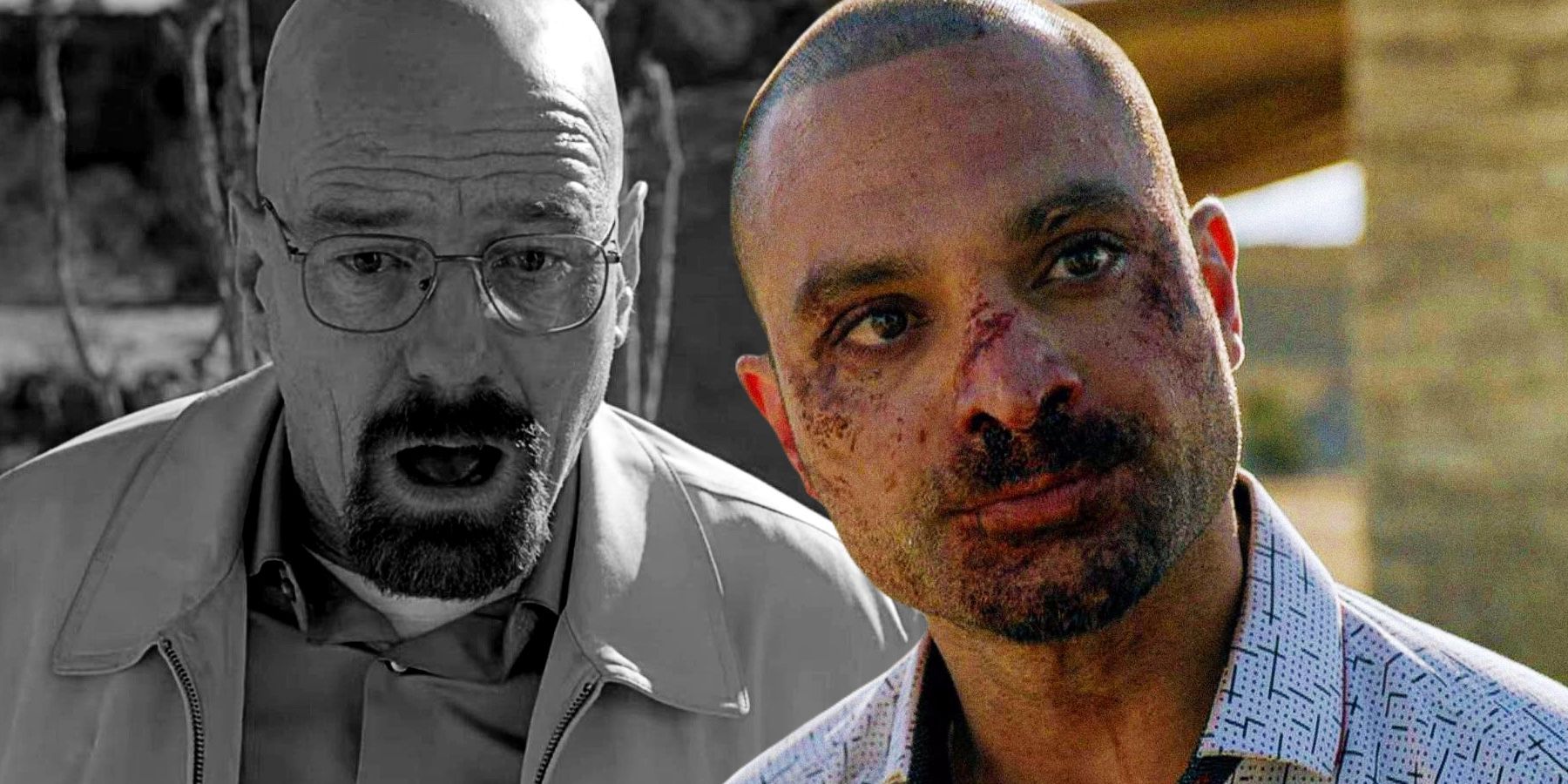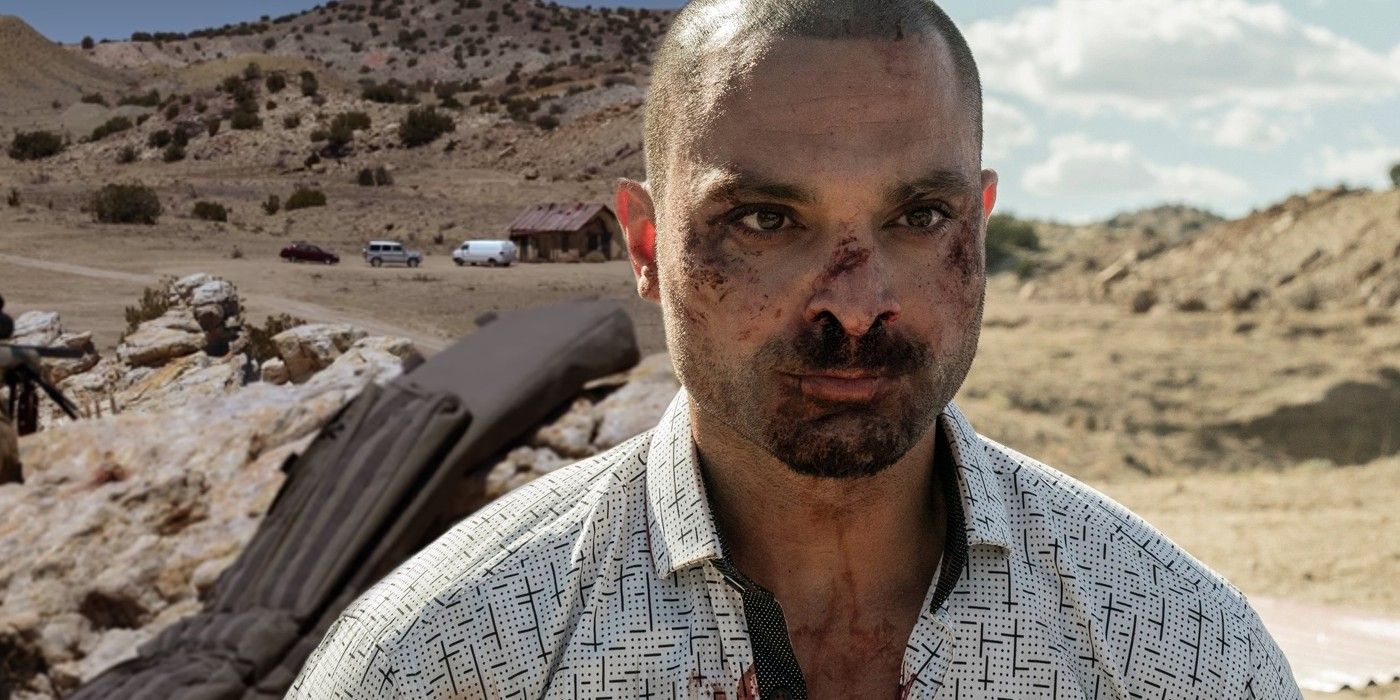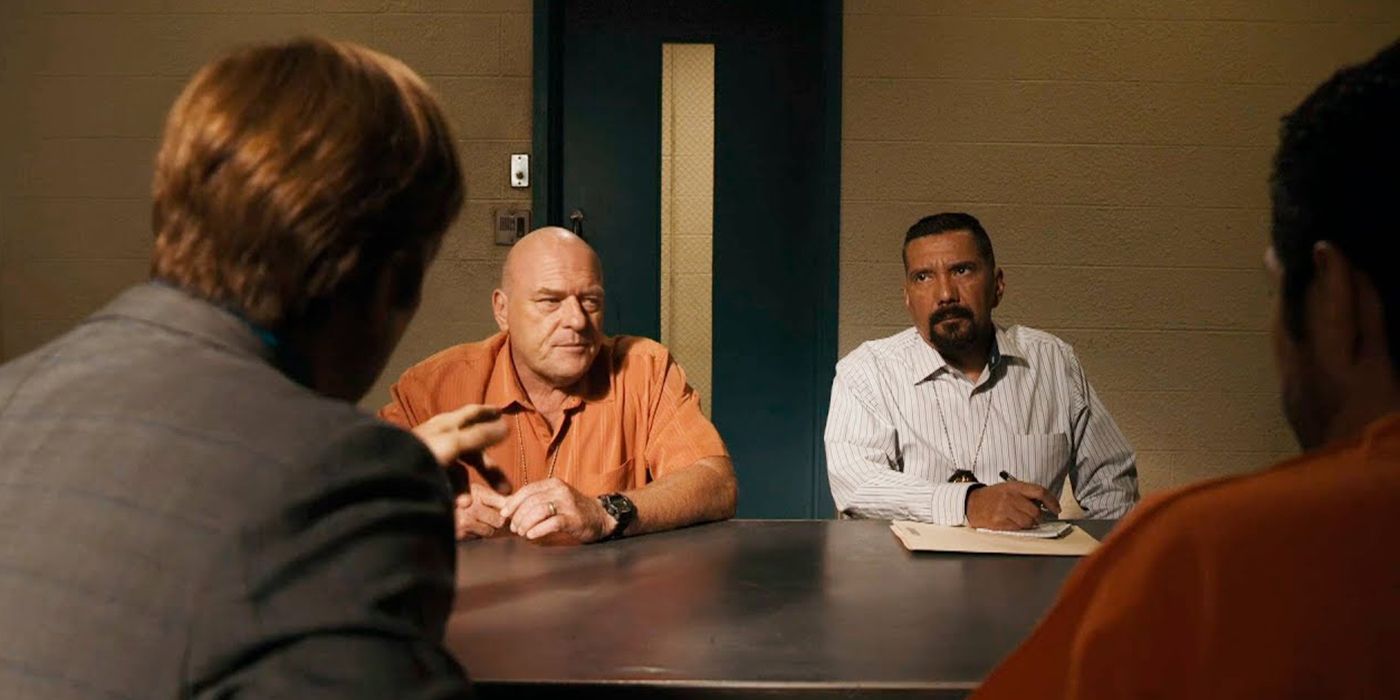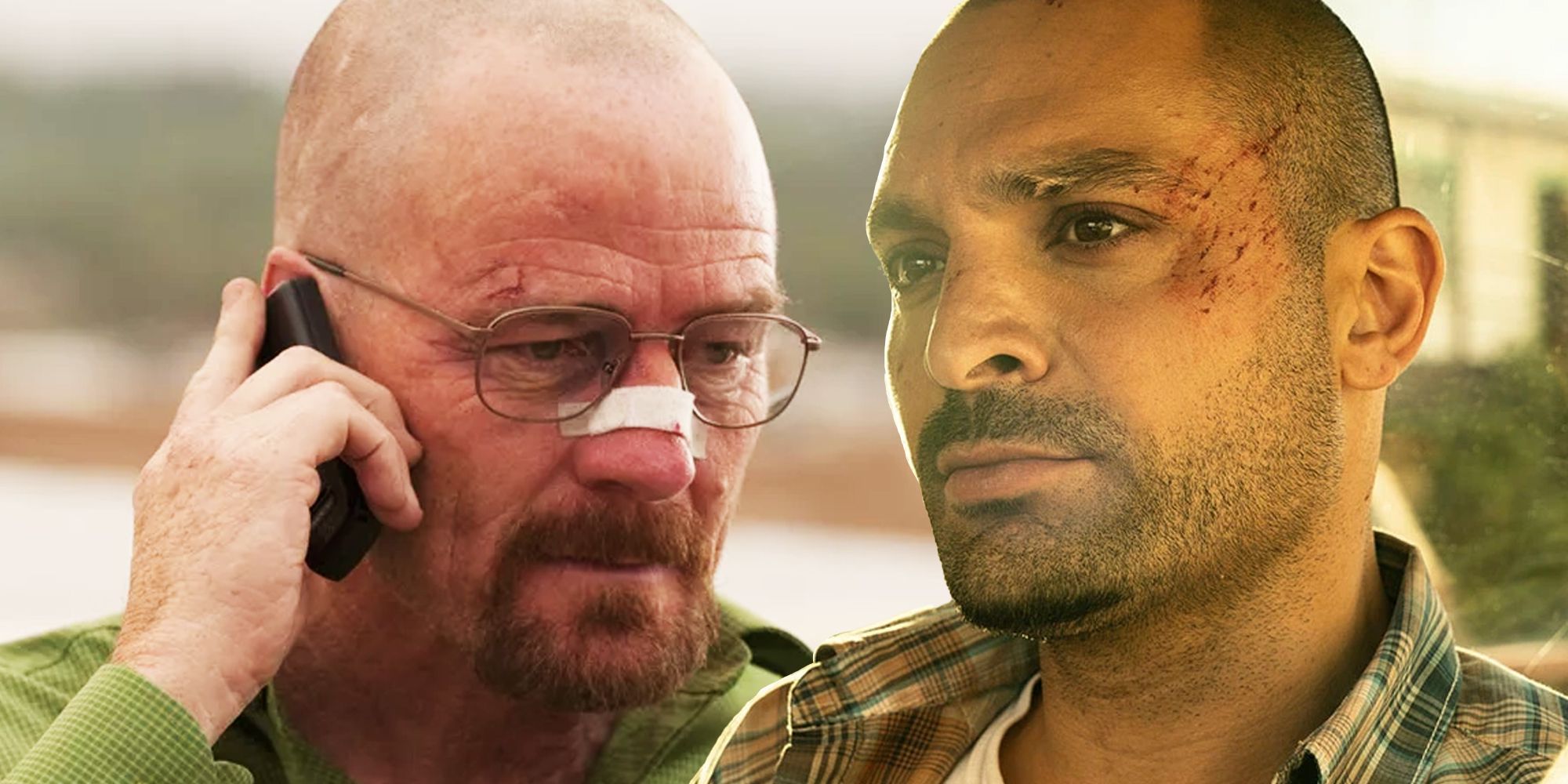Warning: this article contains spoilers for Better Call Saul season 6.
Better Call Saul season 6, episode 3, "Rock and Hard Place" contains many parallels to "Ozymandias," which is often considered the greatest episode of Breaking Bad. Both episodes feature confessions, conflict, and death in the desert, however, "Rock and Hard Place" subverts key aspects of "Ozymandias" to brilliant effect. Better Call Saul is a prequel to Breaking Bad that includes many fondly remembered characters from Vince Gilligan's original series, as well as new characters that do not appear in Breaking Bad. Nacho and Kim's absence from Breaking Bad stirs up theories about why they are not present during Walter White's reign as Heisenberg, and Better Call Saul season 6, episode 3 finally concludes Nacho's story.
Nacho proves the age-old cliché that getting out of the drug trade is easier said than done. A member of the Salamanca crime family, Nacho betrays his employers when he swaps Hector Salamanca's nitroglycerin pills for ibuprofen. His plan to kill Hector and save his father is thwarted by Gus Fring, who identifies Nacho's scheme and blackmails Nacho into working for him. Gus' plans for Nacho put him in increasing danger, as he is tasked with aiding Gus' hit-men with the attempted assassination of Lalo Salamanca. Once again, things don't go to plan for Nacho and his involvement in the attempt on Lalo's life becomes obvious to the Salamancas, placing him in a seemingly inescapable position.
Better Call Saul season 6, episode 3 sees Nacho accept his fate and blame Alvarez in exchange for his father's safety. His inevitable death in the episode is reminiscent of Hank's heart-breaking demise in Breaking Bad, in which both men got the last laugh. Better Call Saul does not emulate "Ozymandias" beat-for-beat, however, as Nacho's final tirade towards the Salamancas inverts the crushing revelations in Breaking Bad's episode, leaving a bitter-sweet taste in the mouth of viewers in comparison to the despair and tragedy that permeates Breaking Bad's greatest episode.
Rock and Hard Place and Ozymandias Both Have Inevitable Desert Conflicts
From its first episode, Breaking Bad establishes the desert as the wild and vast setting where many of its grimmest actions can take place unseen. The opening of Breaking Bad season 5, episode 14, "Ozymandias" runs back to Walter White's first time in the desert before returning to the current situation in the same place where Hank has been shot by Jack's biker gang. The use of flashback in "Ozymandias" signals the end of Breaking Bad and the cyclical nature of violence, as the first act of violence and the most heart-breaking both occur in the same place in the desert. The notion of circularity also demonstrates the inevitability of Walt's eventual downfall and the consequences of his actions, especially since his brother brother-in-law is a DEA agent and the nature of the business that Walt thrives in.
The showdown in Better Call Saul season 6, episode 3, "Rock and Hard Place" is similarly inevitable. Since Gus works in tangent with Don Eladio's cartel and the Salamanca family during Breaking Bad, Gus is never going to take the blame for the assassination attempt on Lalo, otherwise, either Gus or the Salamancas would be dead before the events of Breaking Bad. Nacho eventually shoulders the blame to protect his father and enable the events of Breaking Bad. It's fitting that his death takes place in similar surroundings to the events of "Ozymandias" as it harks back to the sense of tragedy felt during Hank's death and therefore makes audiences believe that something similar will transpire.
Nacho's Better Call Saul Death Mirrors Hank In Breaking Bad
While the deaths of Hank and Nacho both shocked and upset audiences, the similarities between their killings run deeper. As previously stated, they're both inevitable and take place in the desert but both characters are also allowed to endear themselves to audiences before they bite the bullet. In Hank's case, Walt's desperation to save him leads to a glimmer of hope as Walt offers his hidden stash of $80 million to Jack in exchange for Hank's life. Yet, as Hank tells his brother-in-law, "You're the smartest guy I ever met. And you're too stupid to see he made up his mind ten minutes ago." This last gut-punching line reveals Walt's own deficiencies, as he is often blinded by money, his emotions, and his ego. With Hank's death in Breaking Bad, Walt acknowledges his own vulnerability for the first time in forever, meanwhile Nacho manages to expose a chink in Gus Fring's seemingly impenetrable armor before he dies. When Nacho lies about his employer, Hector Salamanca remains convinced that Gus is to blame. After being asked if anyone else is involved, Nacho looks at Gus and asks rhetorically, "Him?" Quivers appear on Gus' stone-clad face before Nacho insults him, branding Gus "the chicken man? What a joke." Like Hank, Nacho degrades the one ultimately responsible for his death and makes Gus aware of the fragility of his position. Truly, in the world of Breaking Bad and Better Call Saul, nobody is ever safe, and Hank and Nacho make sure that nobody forgets that before they go out.
Both characters also reveal their true selves and intentions in their final moments. Hank refuses to beg and insists to Jack, "My name is ASAC Schrader. And you can go f*** yourself." Right until his end, Hank lives and dies by his position as an officer of the law, never flinching or changing his values. In contrast, Nacho reveals his true self in the desert, telling the Salamancas what he truly thinks of them after years of service, that he hates "every last one of you psycho sacks of s***." Although both instances are ultimately futile, they are no doubt satisfying ways to close their character arcs.
Nacho’s Hector Salamanca Revelation Inverts A Walter White Confession
When Nacho reveals his true feelings to the Salamancas in Better Call Saul, he drops another bombshell when he tells Hector that it's his fault that Hector is a wheelchair user. As he tried to do in the prior episode in his gunfight with the Salamanca cousins, the revelation is Nacho going out in a blaze of fire, and as such is incredibly cathartic for audiences. The catharsis is so great due to how despicable Hector Salamanca is, and since Nacho takes his own life swiftly after, it means that Nacho truly got the last laugh as Hector is not able to carry out his revenge how he would've wanted. In Breaking Bad, "Ozymandias" also includes a devastating revelation, when Walt confesses to Jesse that he watched Jane die in Breaking Bad season 2. This revelation has the complete opposite effect as Nacho's however, as most of the audience truly cares for Jesse after all his ordeals, and saw the pain that Jane's death put him through. Whereas Nacho's declaration shows what side Nacho was always on, Walt's confession solidifies him as the true villain in Breaking Bad. The contrast and similarities between the revelations and deaths in Better Call Saul season 6, episode 3, and Breaking Bad's finest episode allow surprise through subversion, but it also serves to make Nacho's death even more poignant.
New episodes of Better Call Saul air every Monday on AMC.




